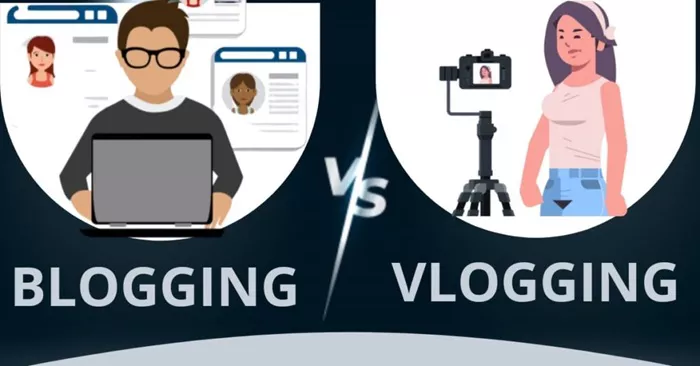In the realm of digital content creation, two prominent platforms have emerged as key players in fashion communication: traditional blogging and microblogging. Each platform offers distinct advantages tailored to different content strategies, audience preferences, and engagement styles. This comprehensive guide delves into the nuances of both blogging and microblogging, aiming to provide clarity for fashion enthusiasts and content creators looking to optimize their digital presence.
Introduction: Understanding Blogging and Microblogging in Fashion
What is Blogging?
Blogging serves as a foundational platform for content creators to publish long-form articles, essays, and posts covering a wide range of topics. Originally conceived as online journals or diaries, blogs have evolved into multifaceted platforms where individuals and brands share in-depth insights, analyses, tutorials, and personal experiences.
What is Microblogging?
Microblogging, in contrast, focuses on concise and immediate content delivery. It typically involves shorter posts, updates, or snippets that are quick to consume and easy to share. Platforms like Twitter, Instagram (through captions, Stories, and Reels), Tumblr, and TikTok have popularized microblogging by emphasizing real-time interaction, visual content, and community engagement.
Deep Dive into Blogging: Engaging Audiences with In-Depth Content
The Role of Blogging in Fashion Communication
Comprehensive Coverage: Blogs allow for detailed exploration of fashion topics, including trends, style guides, product reviews, industry news, and personal narratives.
Educational Resources: Fashion bloggers often create extensive guides and tutorials, providing readers with valuable information on styling tips, shopping advice, and fashion history.
Thought Leadership: Blogging enables influencers and brands to establish authority within the fashion industry by offering unique perspectives, analyses of runway shows, and commentary on cultural influences.
Crafting Engaging Blog Content
Long-Form Articles: Publish in-depth articles that delve into specific aspects of fashion, such as sustainable fashion practices, emerging designers, or historical fashion movements.
Visual Enhancements: Incorporate high-quality images, infographics, and videos to complement written content, enhancing reader engagement and visual appeal.
Community Interaction: Foster discussions through comments sections, encouraging readers to share their thoughts, ask questions, and contribute to the dialogue surrounding fashion topics.
See also: 7 Things To Consider When Blogging
Microblogging Strategies: Captivating Audiences with Concise Content
Harnessing Microblogging for Fashion Engagement
Visual Storytelling: Utilize platforms like Instagram and TikTok to share visually compelling content, including outfit inspiration, fashion hauls, and behind-the-scenes glimpses of fashion events.
Real-Time Updates: Share immediate updates on fashion trends, new arrivals, and industry news through short-form posts, quick videos, or live streams.
Community Engagement: Encourage interaction through likes, comments, shares, and user-generated content (UGC) campaigns, fostering a sense of community among followers.
Enhancing Engagement through Microblogging Tactics
Hashtags and Trends: Leverage trending hashtags and challenges to increase visibility, attract new followers, and engage with a broader audience interested in fashion-related content.
Influencer Collaborations: Partner with fashion brands and influencers for sponsored content, product endorsements, and collaborative campaigns that resonate with your audience.
Interactive Features: Use interactive features such as polls, quizzes, and Q&A sessions to solicit feedback, gather insights, and strengthen connections with followers.
Analyzing Impact: Metrics and Measurement
Evaluating Blogging Performance
SEO and Traffic Analysis: Monitor blog traffic, keyword rankings, and backlink acquisition to assess the reach and effectiveness of SEO strategies.
Engagement Metrics: Measure reader engagement through comments, shares, time spent on page, and social shares to gauge content resonance and reader interest.
Assessing Microblogging Effectiveness
Engagement Rates: Analyze likes, comments, shares, and video views to evaluate content virality, follower interaction, and audience engagement levels.
Follower Growth and Demographics: Utilize platform analytics to track follower demographics, identify audience preferences, and tailor content to maximize engagement and reach.
Conclusion: Leveraging Blogging and Microblogging for Fashion Success
In conclusion, both blogging and microblogging play integral roles in fashion communication, each offering unique benefits and strategies for engaging with audiences. Blogging excels in providing detailed insights, extensive analyses, and comprehensive resources that cater to readers seeking in-depth information and expertise. Microblogging, on the other hand, thrives on immediacy, visual storytelling, and real-time interaction, making it ideal for capturing fleeting trends, fostering community engagement, and amplifying brand visibility.
Related topics:
- How To Distribute Your Personal Blog Effectively
- Blog Post Examples: A Comprehensive Guide
- Distributing Hostinger Webmail: A Comprehensive Guide

